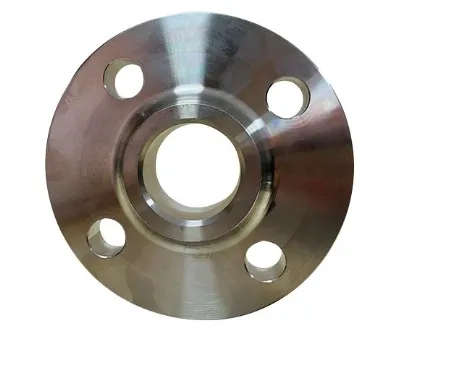-
Cangzhou Yulong Steel Co., Ltd.
-
Phone:
+86 13303177267 -
Email:
admin@ylsteelfittings.com
- English
- Arabic
- Italian
- Spanish
- Portuguese
- German
- kazakh
- Persian
- Greek
- French
- Russian
- Polish
- Thai
- Indonesian
- Vietnamese
- Zulu
- Korean
- Uzbek
- Hindi
- Serbian
- Malay
- Ukrainian
- Gujarati
- Haitian Creole
- hausa
- hawaiian
- Hebrew
- Miao
- Hungarian
- Icelandic
- igbo
- irish
- Japanese
- Javanese
- Kannada
- Khmer
- Rwandese
- Afrikaans
- Albanian
- Amharic
- Armenian
- Azerbaijani
- Basque
- Belarusian
- Bengali
- Bosnian
- Bulgarian
- Catalan
- Cebuano
- China
- China (Taiwan)
- Corsican
- Croatian
- Czech
- Danish
- Esperanto
- Estonian
- Finnish
- Frisian
- Galician
- Georgian
- Kurdish
- Kyrgyz
- Lao
- Latin
- Latvian
- Lithuanian
- Luxembourgish
- Macedonian
- Malgashi
- Malayalam
- Maltese
- Maori
- Marathi
- Mongolian
- Myanmar
- Nepali
- Norwegian
- Norwegian
- Occitan
- Pashto
- Dutch
- Punjabi
- Romanian
- Samoan
- Scottish Gaelic
- Sesotho
- Shona
- Sindhi
- Sinhala
- Slovak
- Slovenian
- Somali
- Sundanese
- Swahili
- Swedish
- Tagalog
- Tajik
- Tamil
- Tatar
- Telugu
- Turkish
- Turkmen
- Urdu
- Uighur
- Welsh
- Bantu
- Yiddish
- Yoruba

Nov . 09, 2024 01:41 Back to list
Techniques and Tips for Efficient Round Pipe Welding Projects
Round Pipe Welding Techniques, Applications, and Best Practices
Round pipe welding is a crucial technique in various industries, from construction to manufacturing and energy. The process involves joining two or more cylindrical pipes to create a secure and durable connection. Understanding the techniques, applications, and best practices of round pipe welding is essential for professionals in the field to ensure high-quality results and safety.
Techniques of Round Pipe Welding
1. Shielded Metal Arc Welding (SMAW) SMAW, commonly known as stick welding, is a widely used method for round pipe welding. It involves using an electrode coated with flux, which melts and protects the weld pool during the process. This technique is versatile and can be applied in various environments, making it suitable for outdoor welding.
2. Gas Metal Arc Welding (GMAW) Also known as MIG welding, GMAW utilizes a continuously fed wire electrode and a shielding gas to protect the weld area. This method is efficient for round pipe welding, offering a clean and precise weld with minimal post-weld cleanup. It is widely used in industrial applications where speed and quality are critical.
3. TIG Welding (Gas Tungsten Arc Welding) TIG welding offers high precision and control, making it ideal for thin-walled round pipes or materials that require a clean, aesthetically pleasing finish. In this process, a non-consumable tungsten electrode is used, and filler material is added manually. While TIG welding is slower, it produces superior weld quality and is often preferred for stainless steel and aluminum pipes.
4. Submerged Arc Welding (SAW) This method involves the formation of an arc between a continuously fed electrode and the workpiece, submerged beneath a layer of granular flux. SAW is particularly effective for welding large diameter pipes due to its high deposition rate and the ability to produce deep penetration welds.
Applications of Round Pipe Welding
Round pipe welding has a broad range of applications across various sectors
- Construction Round pipes are commonly used in building structures, water supply systems, and raised floor systems. Welding these pipes ensures strong joints that can withstand heavy loads and environmental stresses.
round pipe welding

- Manufacturing In the manufacturing sector, round pipe welding is essential for creating components of different machinery and equipment, such as conveyors and exhaust systems. The robustness of welded pipes ensures reliability in operations.
- Oil and Gas The oil and gas industry relies heavily on round pipe welding for pipelines that transport crude oil, natural gas, and refined products. The integrity of these welds is vital for preventing leaks and ensuring safety.
- Automotive Round pipes are used in various automotive applications, including exhaust systems and chassis components. Precise welding techniques are necessary to meet strict safety and performance standards.
Best Practices for Round Pipe Welding
1. Preparation Proper preparation of the pipe edges is essential for achieving a strong weld. This includes cleaning the surfaces to remove any rust, oil, or contaminants that can affect the weld quality.
2. Joint Design Selecting the appropriate joint design is crucial for ensuring strength and durability. Common joint types for round pipes include butt joints and lap joints.
3. Technique Selection Choose the right welding technique based on the materials being welded, the thickness of the pipes, and the intended application. Each method has its advantages and should be selected based on project requirements.
4. Quality Control Implementing quality control measures during and after the welding process ensures that the welds meet the necessary standards. This can include visual inspections, non-destructive testing, and adhering to relevant welding codes.
5. Safety Practices Welding can expose workers to various hazards, including fumes, heat, and electrical shocks. Proper personal protective equipment (PPE) and adherence to safety protocols are vital to ensure the well-being of welders.
In conclusion, round pipe welding plays a vital role in various industries, requiring skilled techniques and best practices to ensure high-quality results. By understanding the different welding methods, their applications, and how to implement safety and quality control measures, professionals can enhance their welding processes and contribute to the longevity and reliability of their projects.
Latest news
-
ANSI 150P SS304 SO FLANGE
NewsFeb.14,2025
-
ASTM A333GR6 STEEL PIPE
NewsJan.20,2025
-
ANSI B16.5 WELDING NECK FLANGE
NewsJan.15,2026
-
ANSI B16.5 SLIP-ON FLANGE
NewsApr.19,2024
-
SABS 1123 FLANGE
NewsJan.15,2025
-
DIN86044 PLATE FLANGE
NewsApr.19,2024
-
DIN2527 BLIND FLANGE
NewsApr.12,2024
-
JIS B2311 Butt-Welding Fittings LR/SR 45°/90° /180°Seamless/Weld
NewsApr.23,2024











